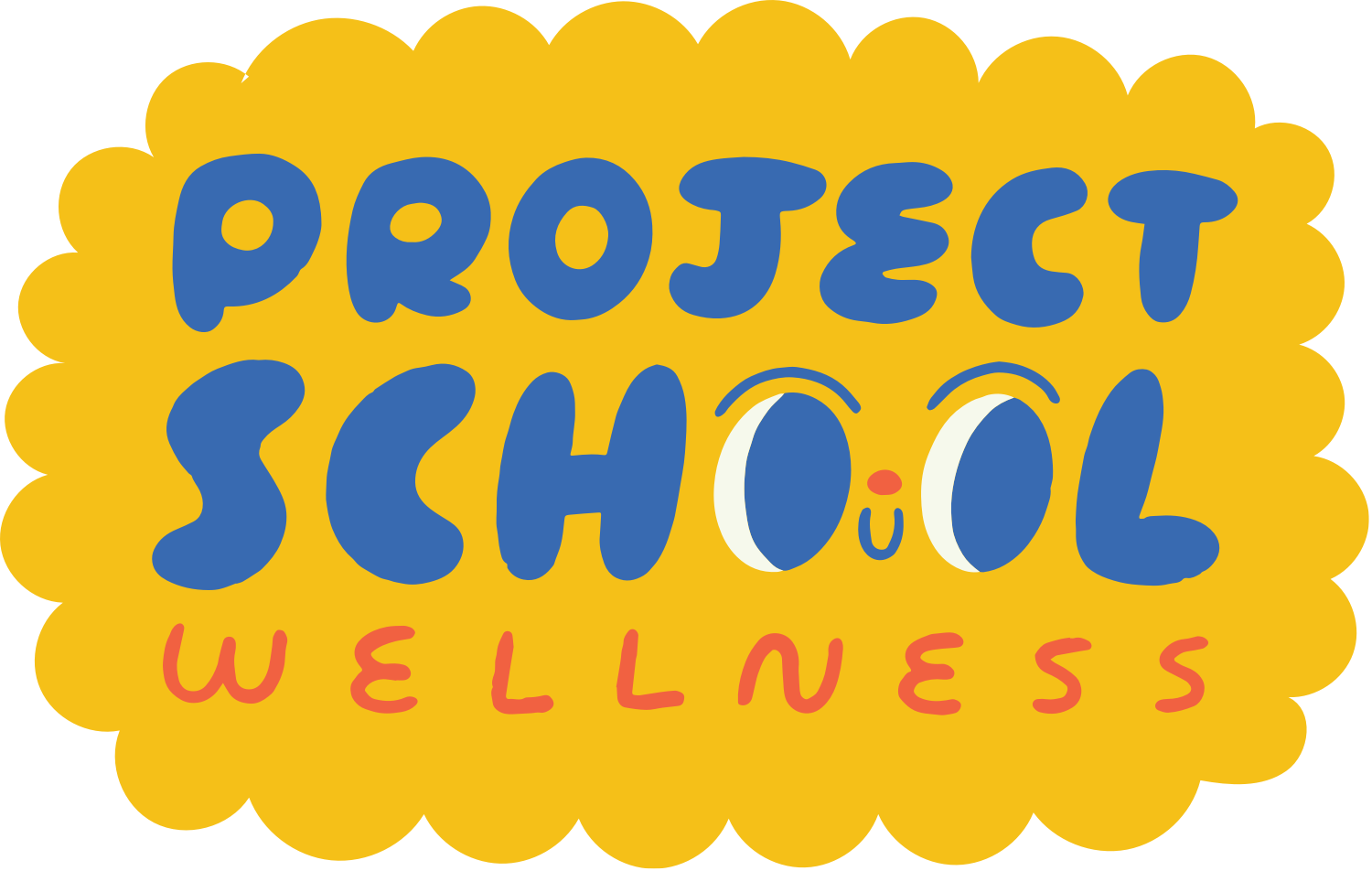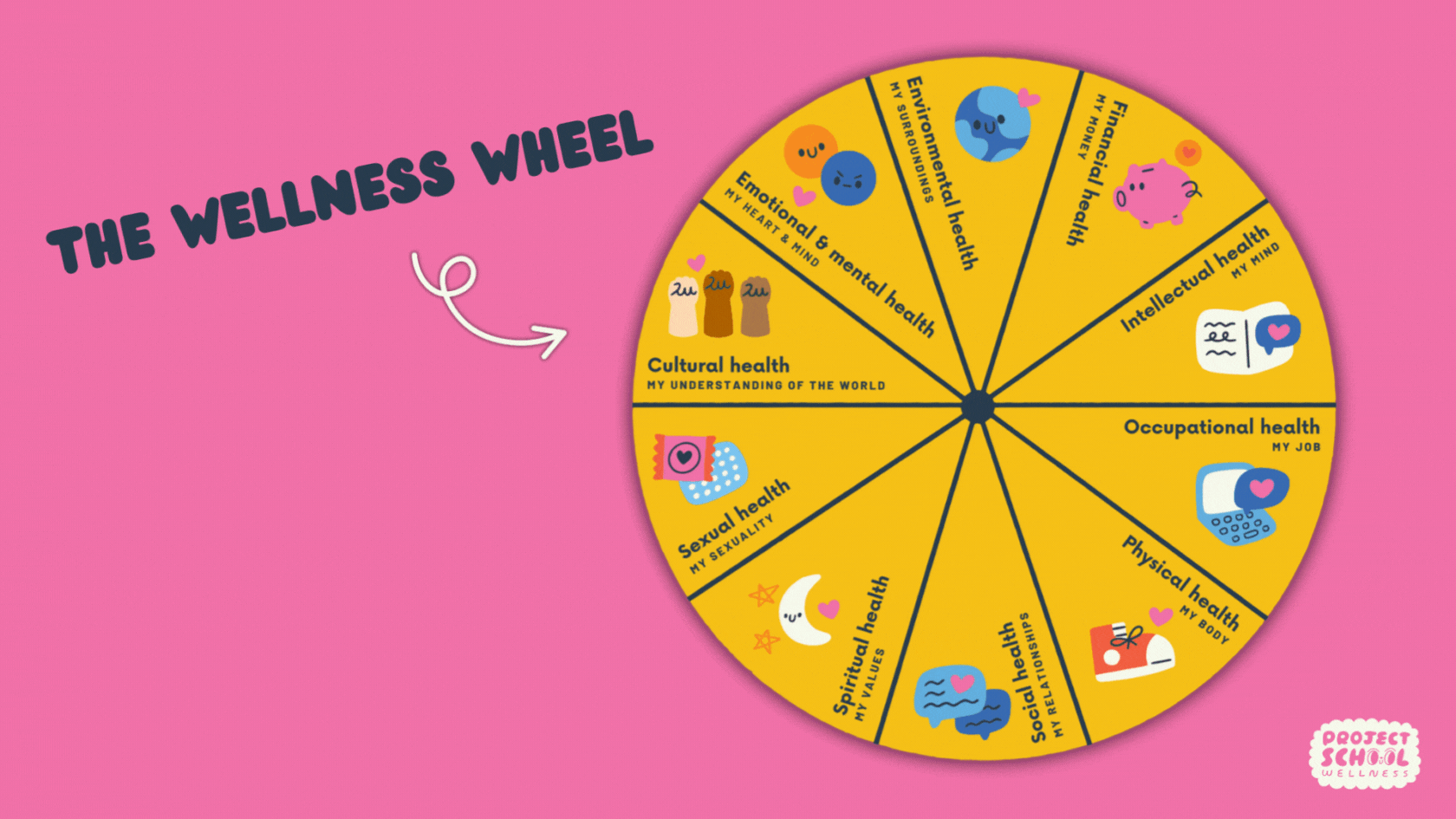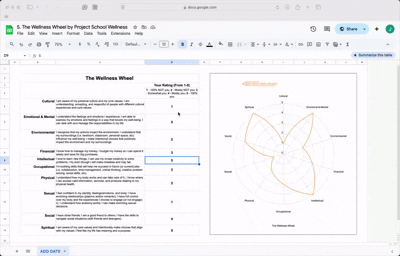School Wellness 101: What the Dimensions of Health Look Like at School
Building off the previous blog post, let’s take a closer look at how the dimensions of health show up at school. But first, a quick refresher on what wellness actually means, not the trendy, commercialized social media version.
Wellness is a dynamic process of living. It’s not a destination to reach or a problem to fix. It’s not about simply avoiding illness or treating disease. The real goal of wellness is to help each person experience lasting happiness, joy, and a meaningful life.
Now that we’ve grounded ourselves in what wellness really means, let’s break it down by exploring the wellness wheel and how each dimension of health shows up in everyday school life.
The Wellness Wheel: The Key to Understanding the Dimensions of Health
Already signed up? Click here to access.
To understand how wellness connects to thriving, we must take a moment to understand wellness and to define the dimensions commonly associated with wellness. One of the best examples I've encountered is that wellness is a wheel. On the Wellness Wheel, each spoke/wedge represents a different component of our well-being. Meaning that when we are balanced in each component, our wheel rolls smoothly and efficiently. However, when our wheel is missing a spoke or two, or if only a few spokes exist, the wheel clunks around and becomes ineffective.
In terms of our well-being, when we are actively and intentionally focusing on how we can be more balanced in each area of life, we experience overall joy and success. But when we are either hyper-focused on a single area of life (i.e. your career) or we completely neglect components in our life (i.e. your physical well-being), we severely limit our capacity for wellness.
The Dimensions of Health and What They Look Like at School
Equipped with this understanding of wellness, we can now look at the definition of each component of wellness and see how it can be translated into the school setting...
Cultural Health and Wellness
Knowing and respecting your culture while also knowing and respecting the culture of others.
Examples of what Cultural Health and Wellness looks like at school: culturally responsive instruction, cultural and heritage celebrations, empathy development, books and literacy projects that serve as windows into other cultures and realities, and classroom discussions that explore identity, bias, and belonging.
Emotional & Mental Health
The ability to live a full and creative life. Possessing the flexibility to deal with life's inevitable challenges and to handle life's responsibilities. Additionally, being aware of and accepting our feelings and emotions while living with an optimistic approach to life.
Examples of what Emotional and Mental Health and Wellness looks like at school: small groups with the school counselor, teaching kids how to express emotions through role-play and fictional scenarios, intentional self-confidence/esteem boosting, access to mental health professionals.
Environmental Health
The awareness and understanding of the impact of our interactions with nature and our personal environment. Learning how to take action to protect the world around us.
Examples of what Environmental Health and Wellness looks like at school: recycling/reusing and composting projects and school-wide campaigns, science projects about the cost and effect of pollution, energy conservation research projects/initiatives, creating art from recycled and reused materials.
Financial Health
Understanding personal finances and how to be financially healthy now and in the future.
Examples of what Financial Health and Wellness looks like at school: integrating personal finances and money management into math (starting in kindergarten), classroom currency, detailed personal finance workshops, educating students about IRAs/RRSPs, and having students open personal accounts once they start working.
Intellectual Health
Willingness to be open to new ideas and experiences, and the desire to increase understanding, improve skills, and continually challenge ourselves.
Examples of what Intellectual Health and Wellness looks like at school: establishing high expectations for students (while also providing necessary support), extracurricular programming, challenging students to look at issues from multiple points of view (i.e., debating on a polarizing topic), Growth Mindset workshops.
Physical Health
Refers to an individual's physical well-being and the state of our physical body.
Examples of what Physical Health and Wellness looks like at school: physical education classes, hot lunch/snack programs, accessibility to water, opportunities for movement throughout the school day, personal hygiene, and disease prevention campaigns.
Occupational Health
School should be a place where students develop a strong work ethic and where students discover future occupations. This component of wellness refers to the ability to balance work and leisure time, the ability to handle workplace stress and to build relationships with co-workers (which is deeply connected to mental/emotional and social wellness), and the ability to explore various careers and determine where we best fit (ideally this begins in early elementary and is reinforced throughout secondary school).
Ultimately, the goal is for students to have a clear direction for their lives once they graduate and enter post-secondary school/training.
Examples of what Occupational Health and Wellness looks like at school: career dress-up days (start kids dreaming young), career projects (start with a simple activity in the lower grades and become more complex as students get closer to high school graduation), career fairs/career counseling, collaborating with communities members in various careers to serve as mentors to students
Sexual Health
Embracing and embodying your sexuality throughout life.
Examples of what Social Health and Wellness looks like at school: developmentally-appropriate sex education, affirming discussions around identity and gender, promoting consent and boundary-setting skills, providing access to trusted adults, and inclusive policies and resources
Social Health
The ability to build personal relationships and connections with others. Being able to deal with social conflict and to be a part of a positive social network.
Examples of what Social Health and Wellness looks like at school: anti-bullying campaigns (via empathy-building and character education), teaching kids how to apologize in a meaningful manner, buddy program (pairing students from the upper grades and lower grades), social skills education through small group workshops.
Spiritual Health
Examples of what Spiritual Health and Wellness looks like at school: activities which help students define and be accountable to their morals, activities to help students define meaning and purpose in their life, peer pressure education, character education
Ready to bring wellness to life in your classroom?
Sign up below to get instant access to our free lesson plans, which include instant access to an interactive wellness wheel your students can use to explore each dimension of health in a meaningful and engaging way.
Let’s help every student build the skills they need to thrive.
Free Lesson Plans: The Interactive Wellness Wheel
Sign up for the free lesson plan before and get instant access to free interactive wellness wheel.



